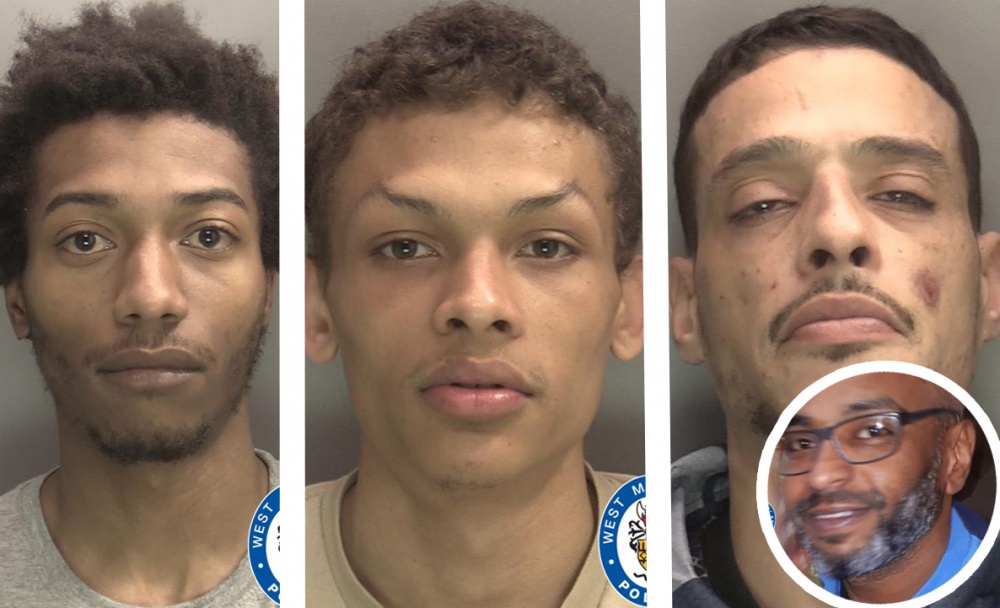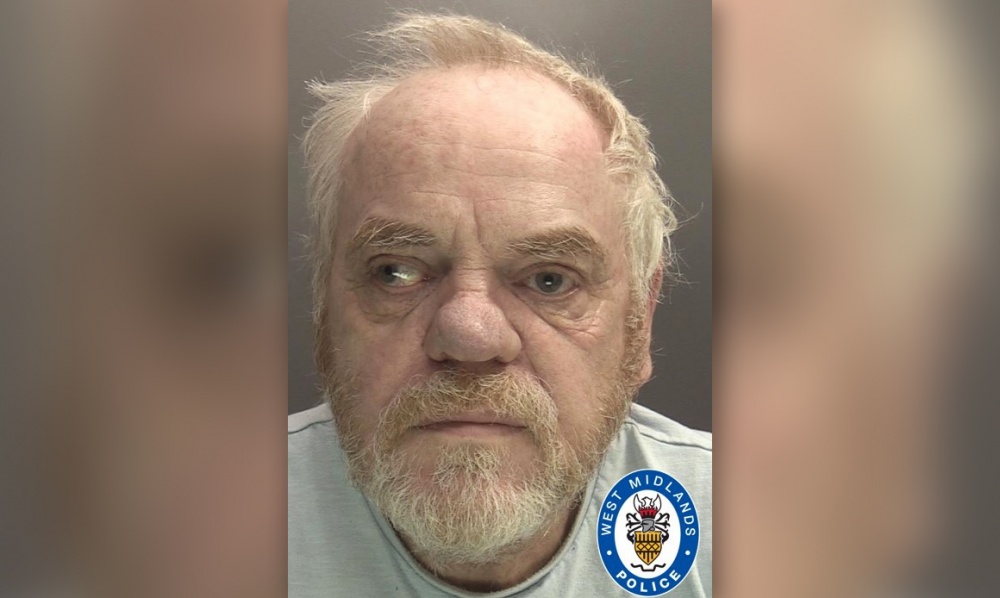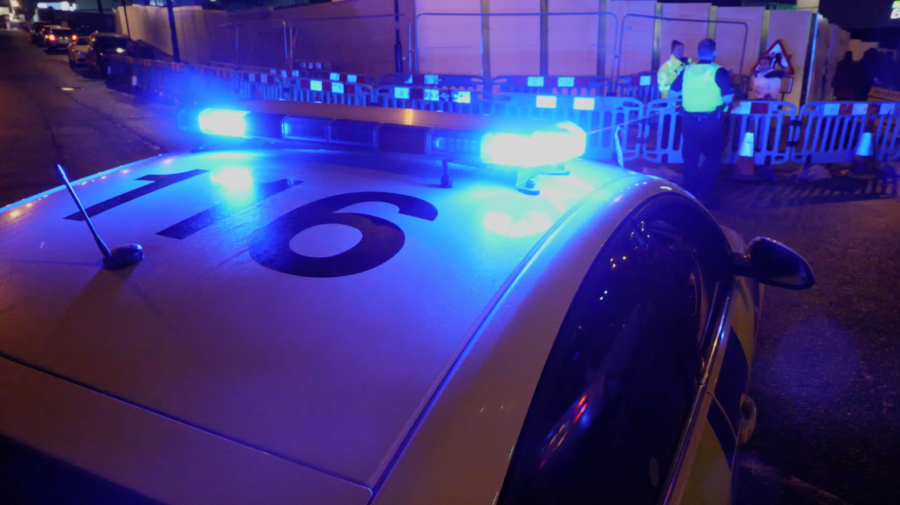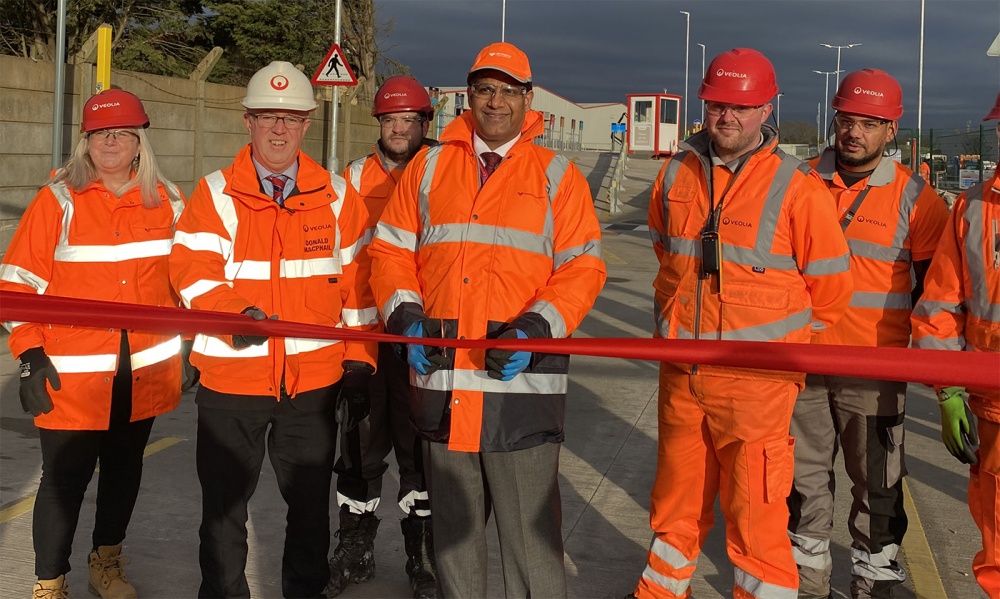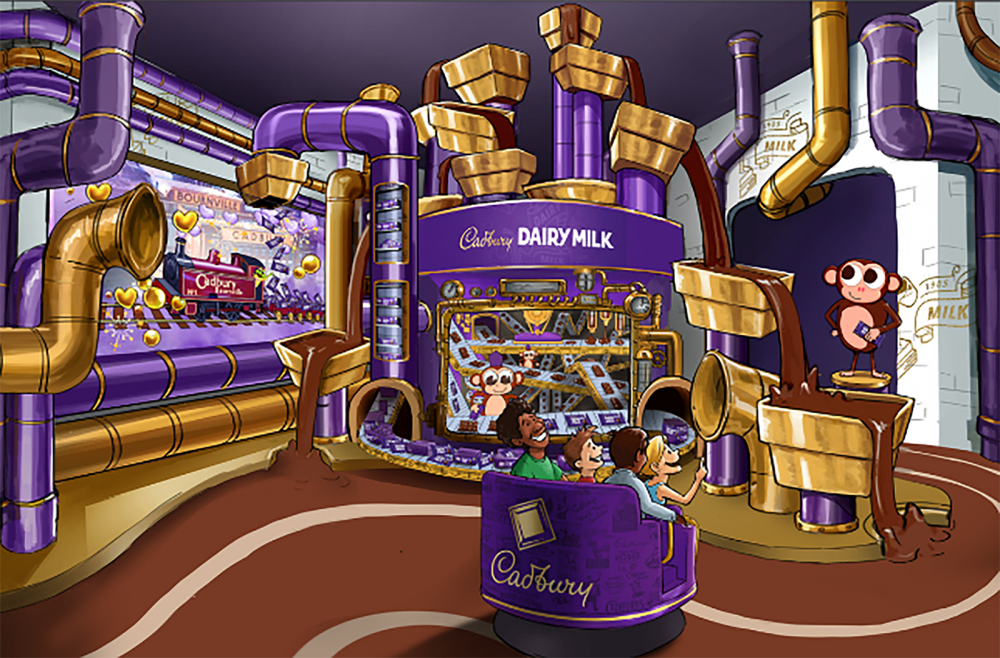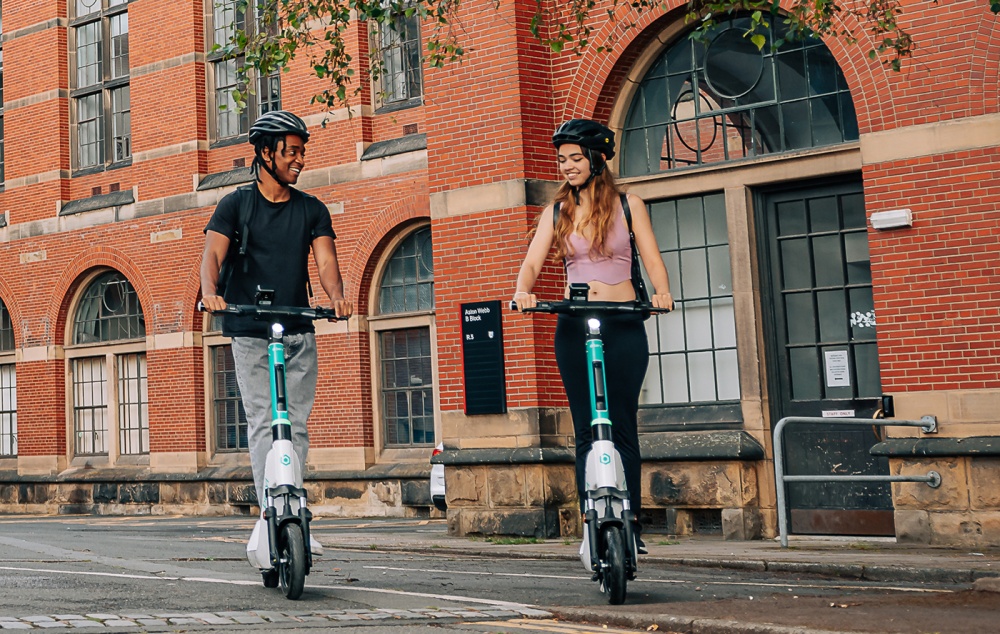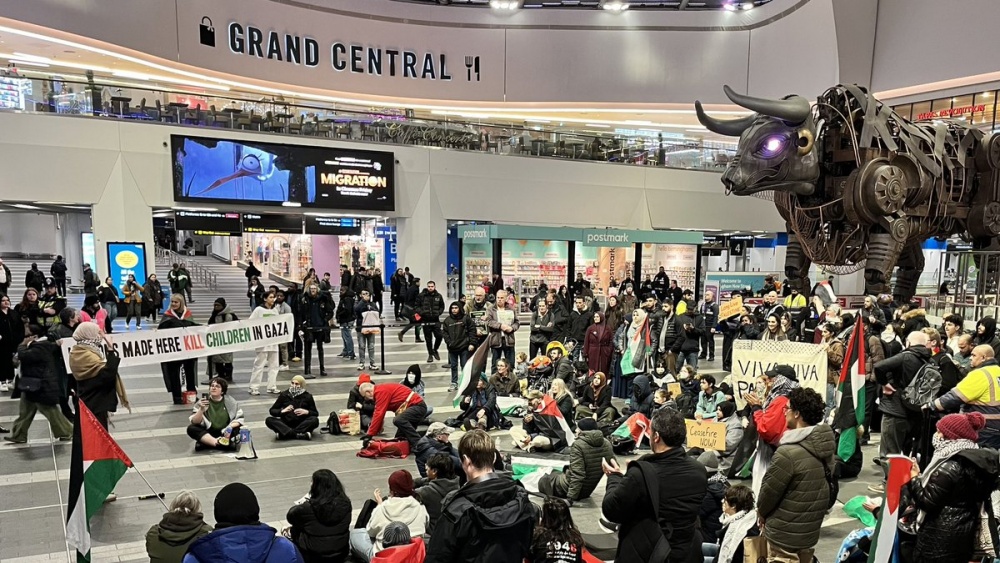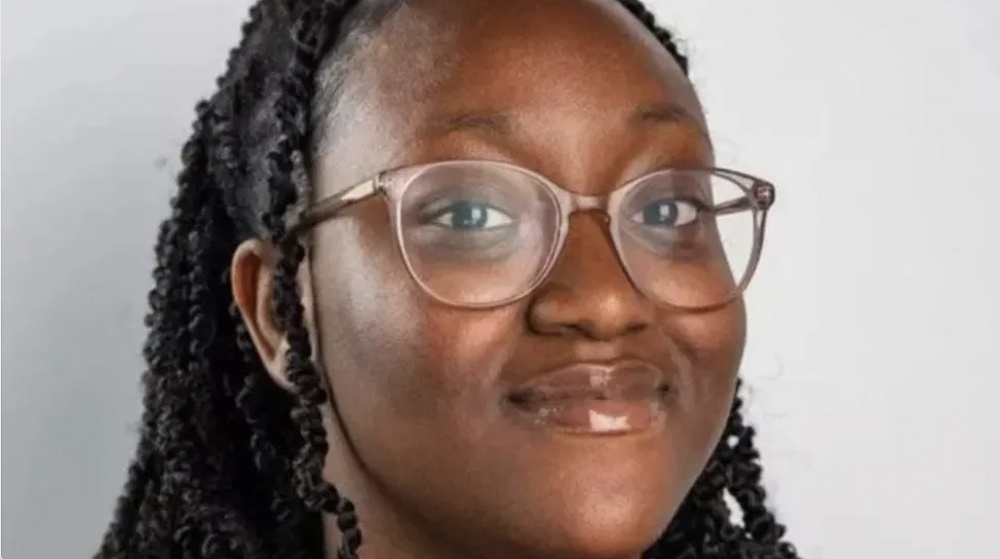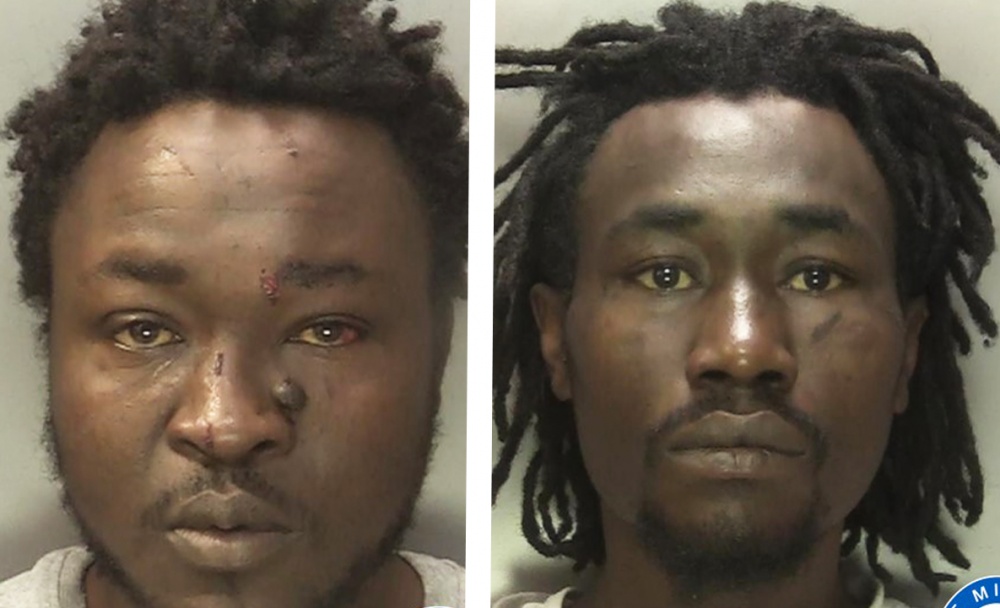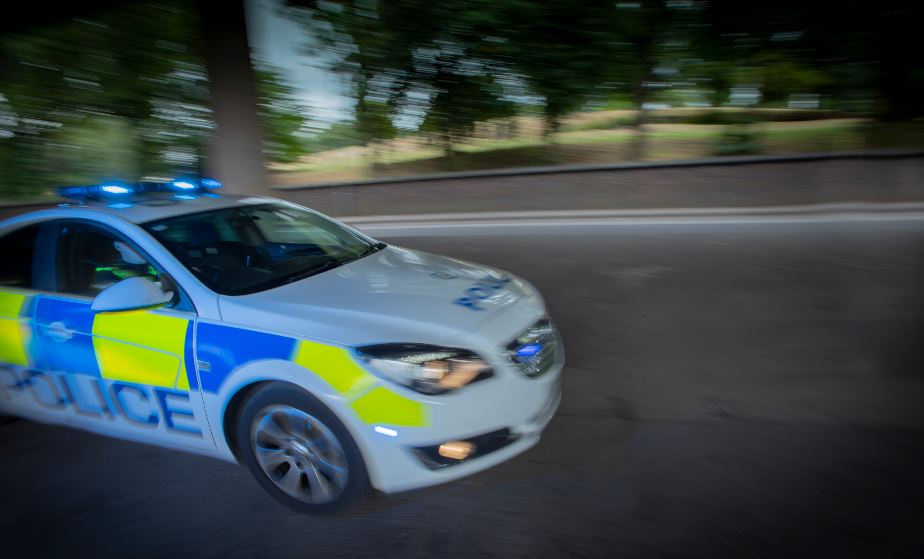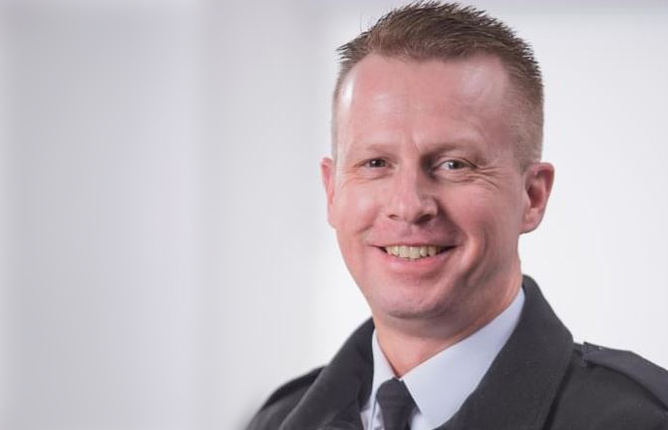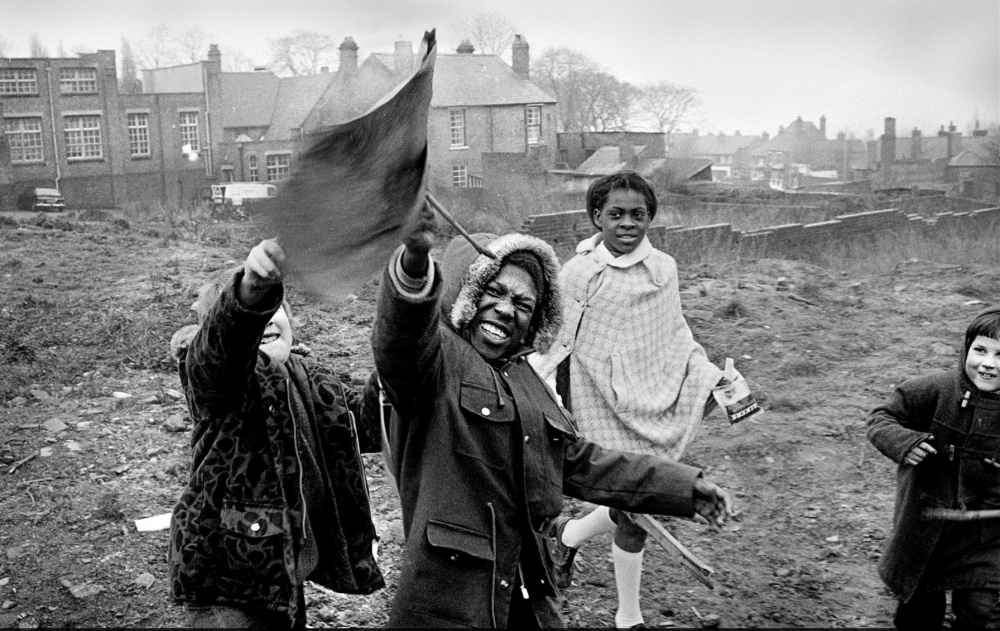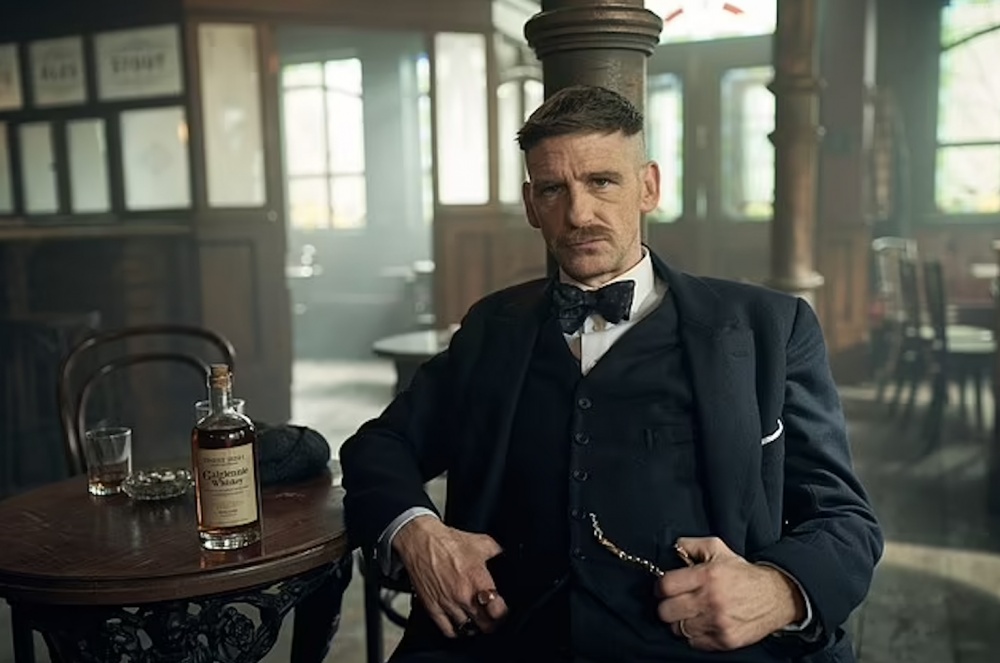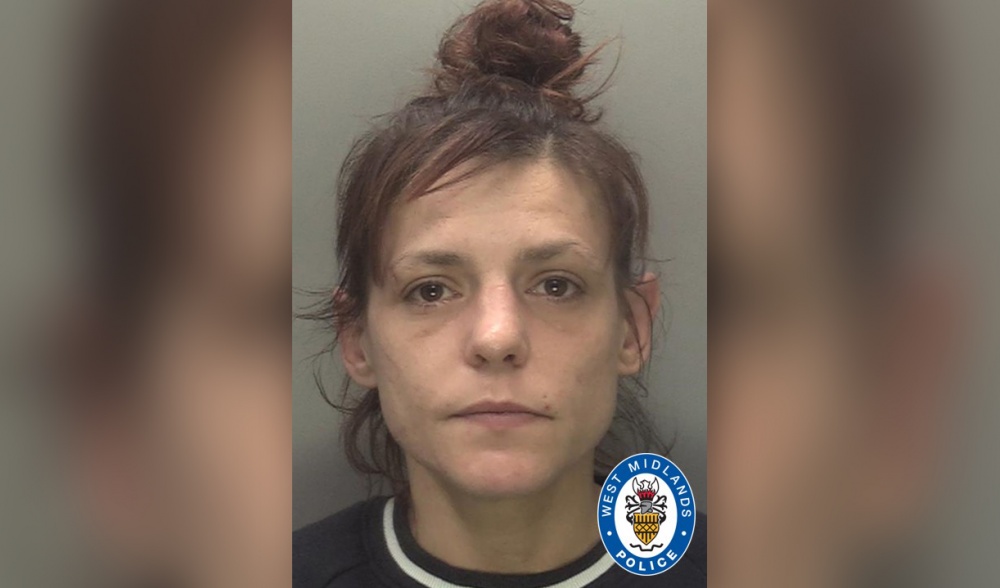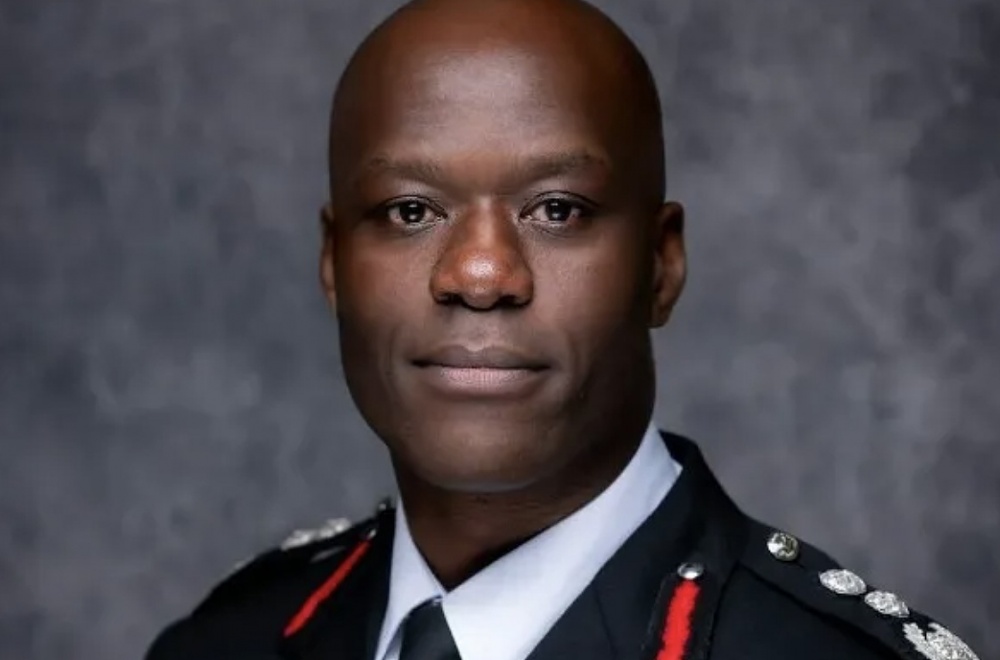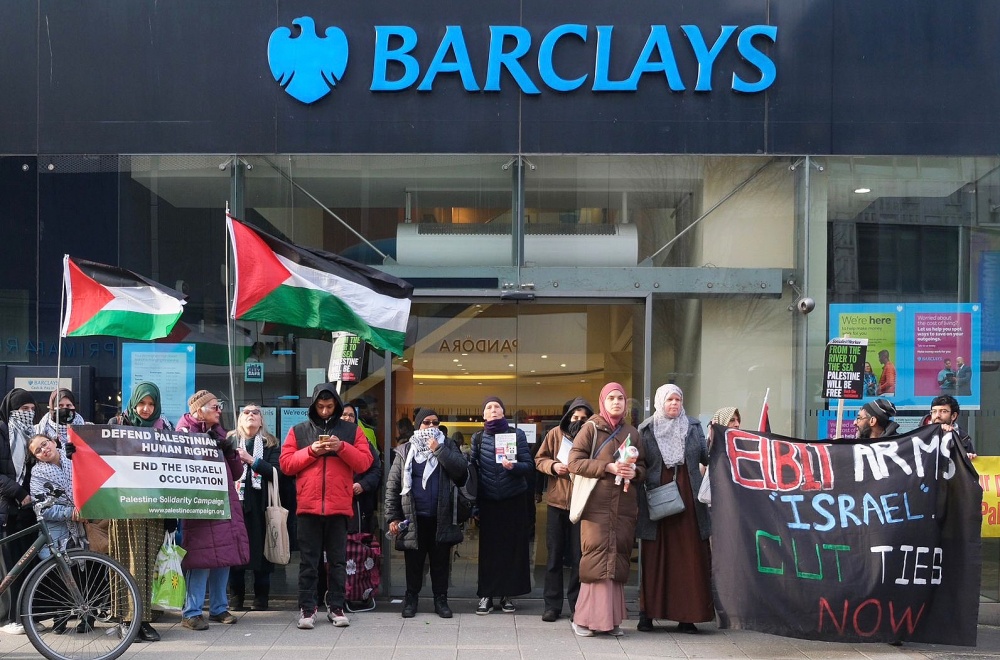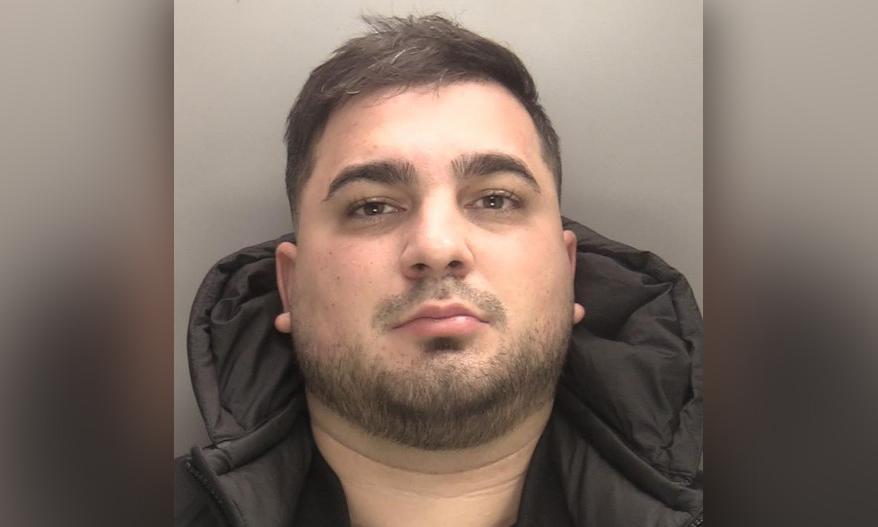Steel Pulse Mural recognising Revolution in Music unveiled in Handsworth
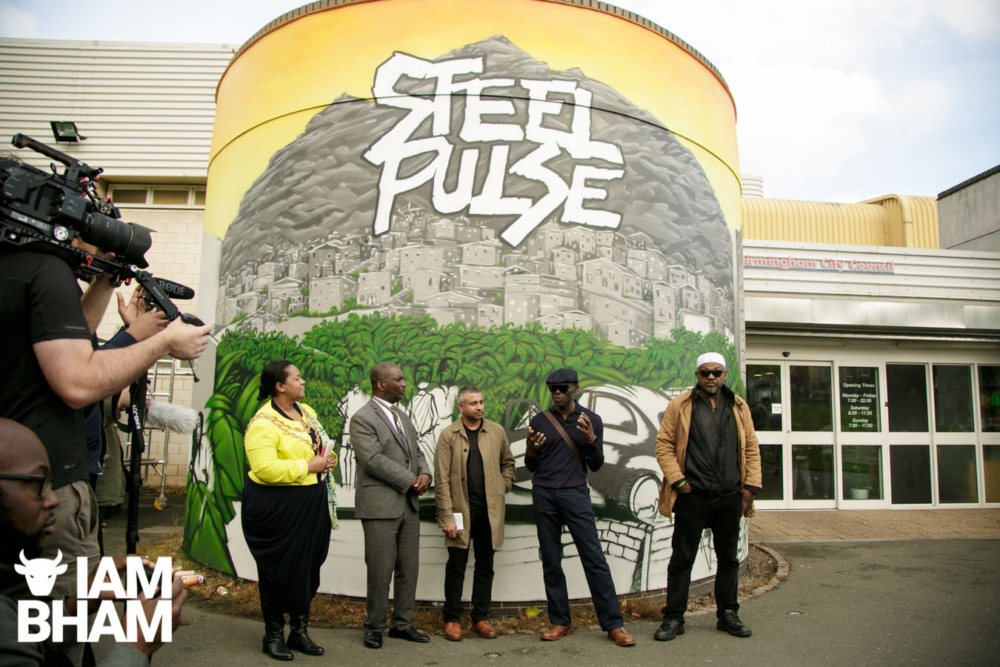
A new mural honouring legendary reggae band Steel Pulse was been unveiled in Handsworth to coincide with National Album Day while recognising revolution through music.
The special unveiling – part of the city’s Bass Festival celebrating 50 Years of Reggae – was held as Birmingham marks Black History Month.
Founding band members Basil Gabbidon and Mykaell Riley were in attendance as the mural was unveiled in front of the Handsworth Wellbeing Centre by Lord Mayor Yvonne Mosquito and Punch Records founder Ammo Talwar MBE.
Ammo said, “The significance of the mural being on Handsworth Wellbeing Centre, formerly Handsworth Leisure Centre, was that it formerly was used by different groups within the community. Friday nights used to be a Blues dance venue, Saturday daytime an Asian wedding venue and Sunday it hosted techno raves.”
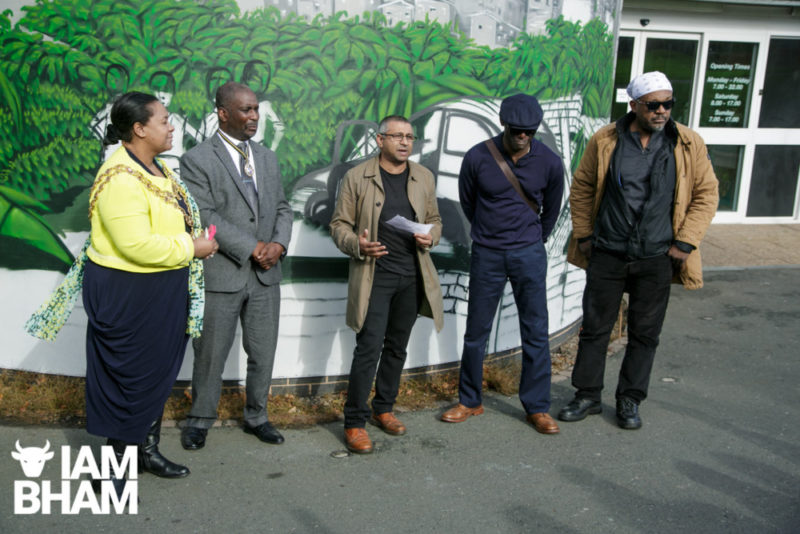 Lensi Photography
Lensi Photography The Mural is a recreation of the sleeve to the iconic album Handsworth Revolution which was released in 1978.
Ammo added: “We identified six different spots for the mural, the original plan was for a 4×4 canvas. We did not think we would get this spot, so when we did get this spot, which was a different shape to the planned 4×4 canvas, we stretched it to the whole arch at the front of the centre.”
Steel Pulse has a very eclectic fan base, from traditional and non-traditional reggae fans all over the world to fans of punk across many different colours and cultures.
French Fans
A French accent in the crowd caught our ear, so we went to speak to William who is a self proclaimed “Steel Pulse superman” from France.
He said: “I discovered the band in Martinique, David Hings (founding member of the band) lives there. Steel Pulse always been big in Martinique. I was 14-years-old when I first came across the music, I recorded it to a tape from a vinyl. I was living in the countryside, nowhere near Paris, so this music was hard to get. I protected this cassette, it was so precious to me!
“Even though we only understood a small percentage of the lyrics, it was the beat, the melody and everything. It is bizarre that I am now here, I now also now know Basil Gabbidon.
“When I first saw Basil’s wife, I thought I knew her. She looks like someone I might know, maybe a cousin or something. I could not think where I knew her from, then I remembered she looked like another artist who was one of our biggest at the time in the French Caribbean, but not very known in this part of the world.”
French Caribbean
When we finally spoke to the woman who apparently ‘looked so familiar’ and found out she’s the sister of Basil, not his wife! Though the band are huge in the French Caribbean.
Basil was responsible for a lot of the early music, so much so that it changed considerably after he left, creating the ‘pre and post Gabbidon’ Steel Pulse sound; a testament to how revolutionary his lyrics and music were.
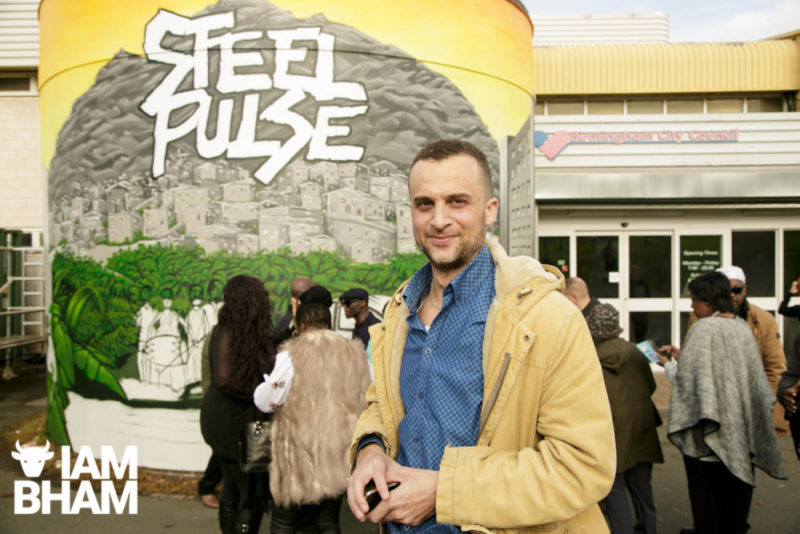 Denise James | I Am Birmingham
Denise James | I Am BirminghamAfter the mural was unveiled, a question and answer session was held in the centre. The Q&A was attended by fans spanning several decades, from people who found the music in the 1970s to people who had only recently discovered it, including fans of all colours and musical backgrounds. Steel Pulse came across as a unifying band.
Birmingham’s Black music history
The session began with paying homage to some of the key and influential players in the city’s Black music scene, such as Lloyd Blake, who ran the first ever black owned city centre nightclub and was part-responsible for giving Jamaican artists in Birmingham.
The panel
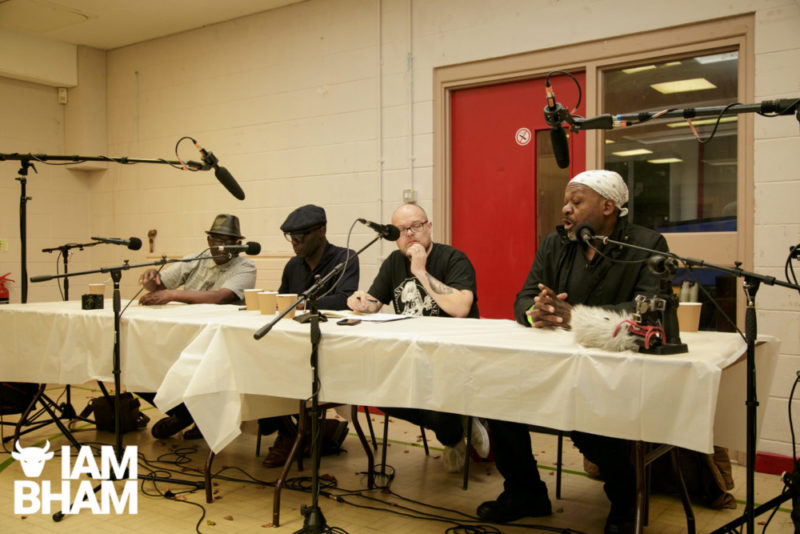 Lensi Photography
Lensi Photography The panel was chaired by Birmingham Music Archive founder Jez Collins and featured the “Godfather of Black British Photography” Vanley Burke, who has documented Handsworth and the Black British diaspora since arriving in the UK at the age of 14, back in 1967. Mykaell Riley, who is accredited with the strong visual look of Steel Pulse. He has since created the International Reggae Philharmonic Orchestra and is a leader of a Black research project leading on the influences of Jamaican music in Britain. He sat alongside fellow Steel Pulse founding member Basil Gabbidon.
Asked about the influence of the iconic album, Mykaell pointed out it is now studied as part of the ‘Music and Resistance’ Modules at Westminster University, highlighting how influential the album has become.
The following audience questions were discussed:
What was Handsworth like in the 1970s?
Basil said: “I could have gone into sports but I wanted to do music because I wanted to travel. I saw music as a way to do this. I heard people talk a lot about racism, but I never encountered much myself personally. People used to spit on you and those things, but I tired to not let it get to me.”
Vanley added: “Institutions were formalising themselves against us, we would see headlines that would talk about “Rampage”, The Birmingham Post wrote they would not be seen dead in Handsworth after 8pm. This was the climate, but what I was reading in the press did not reflect what I was seeing growing up, which is why I felt I needed to document it myself.”
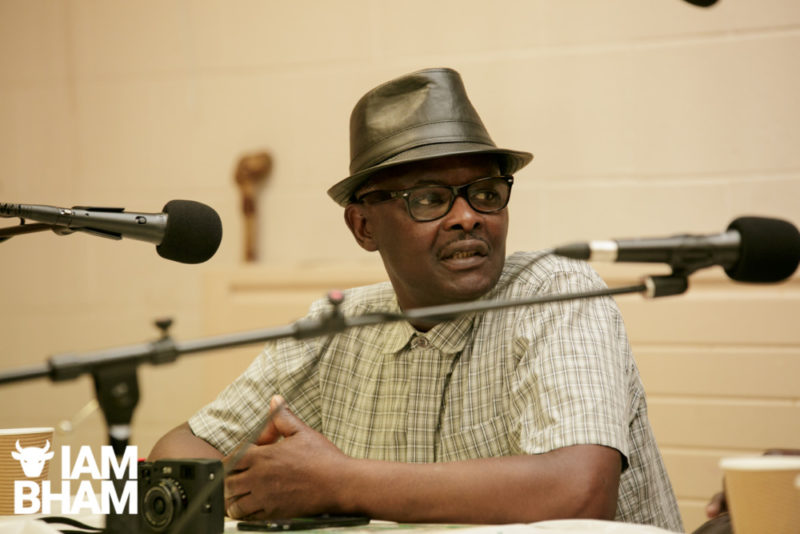 Lensi Photography
Lensi Photography Resistance Though Music
Mykaell said: “I did very well in school, though we were going to go to grammar school; but [then] we were sent to a secondary modern, Handsworth Wood Boys. It was around then we realised that even when playing the system, it still had the opportunity to put you in other places . It was clear that our culture was not in school, none of this was educating us. It was hard to go from your house to anywhere without being harassed by the police or National Front, so the resistance came out in the music. We were also fighting parents in the home, who said make sure you don’t get involved in any of that “reggae stuff”. So it was all a secret.
Was Handsworth a political area?
Mykaell said: “We were not being let into clubs, so we wanted to conquer Handsworth and the Handsworth audience, we were not bothered about the city.”
Vanley commented: “From the beginning it was a process of resistance, there was a lot to resist. We were all from different Islands, we have had to be political because of the structures established against us. There was passive and physical resistance, initially parents also did not not believe the stories of racism because the attitude of parents at the time was ‘there was no smoke without fire’.
Jamaican and English
According to Mykaell, “In the house, we are 160 per cent Jamaican and would speak in Jamaican patois accent, until a Jamaican sibling arrived from Jamaica and put you in your place.
“We had a picture of the Queen in the front room, you step out the house and go to school with a Brummie accent, you resisted church on a Sunday, so it was complex. You were fighting the system who saw you in one way, and fighting parents who had a view of the Queen and the ‘Motherland’ they had come to. The first battle was in the house, before the battle in the street.”
“We lived a duality, we were Caribbean and English, travelling that difficult pathway. By 1977, we knew we had to fight it, and we did it through music.”
“Back then Birmingham was one of the largest communities of concentrated Caribbeans, so Jamaican bands would have to play in Birmingham. So, we got to see many of them first hand.”
Basil added, “You weren’t accepted as English or as Jamaican.”
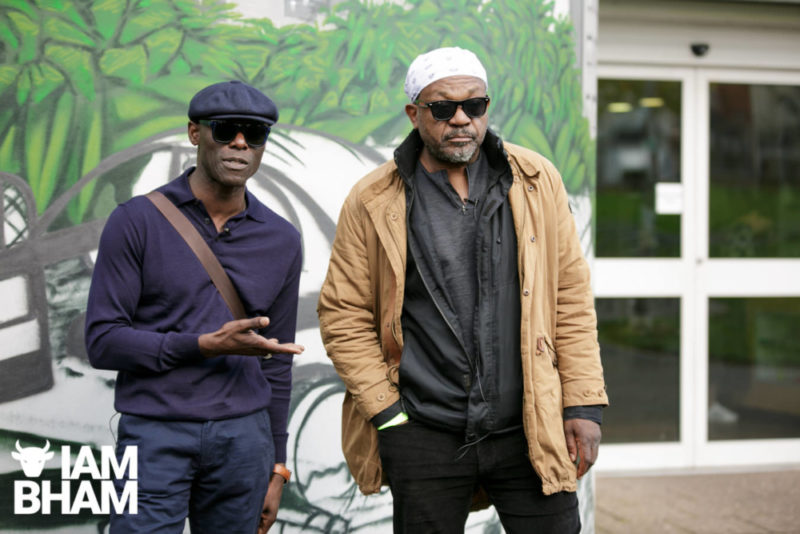 Lensi Photography
Lensi Photography Where did the name Steel Pulse come from?
Mykaell explained: “The name, it’s a race horse. We were debating other names, I can’t remember any of them now, Ronnie used to back horses then, it was a horse that was successful for him. He made a good case for the name, ‘Steel’ represented being strong and ‘Pulse’, a heart pulse heartbeat. Until someone came up with a better name, that’s what it was going to be.
“Then we remember when The Harder They Come was screened and some things changed, after THTC was shown, it was a different bus ride to school.”
The connection between Reggae and Punk
A male fan in the audience, approximately in his 50’s, shared an anecdote once questions were open to the floor.
He said: “Being white, we wanted to play reggae but didn’t have a clue how to create this music. We found a black guy who was a drummer and thought we were onto a good thing, at the time we had to check that we were okay with a black guy being in the band.
“Excitedly, we got to our first rehearsal and it turned out he thought we were gonna play rock. He hated reggae! I was introduced to you [Steel Pulse] while at University. I saw you at X Club. Reggae bands were received well by punk audiences.”
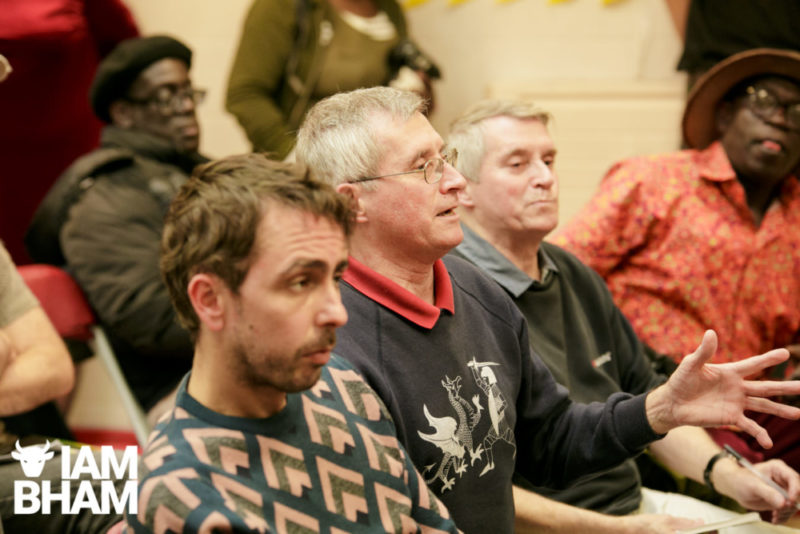 Lensi Photography
Lensi Photography Basil responded, “There was a connection with what we were talking about at the time and what Punks were talking about, and Johnny Rotten wore a Steel Pulse badge while performing. It was all about resistance.”
Dress code
Mykaell told the crowd: “Back then, when you started out as a Caribbean person in a band, we had the notion that stage was a place where you had to dress up and look good. Punks at the time were going on stage with ripped jeans and clothes held together in safety pins etc. So, we looked at how we could express the music with the clothes, what impact could we make on the visuals.”
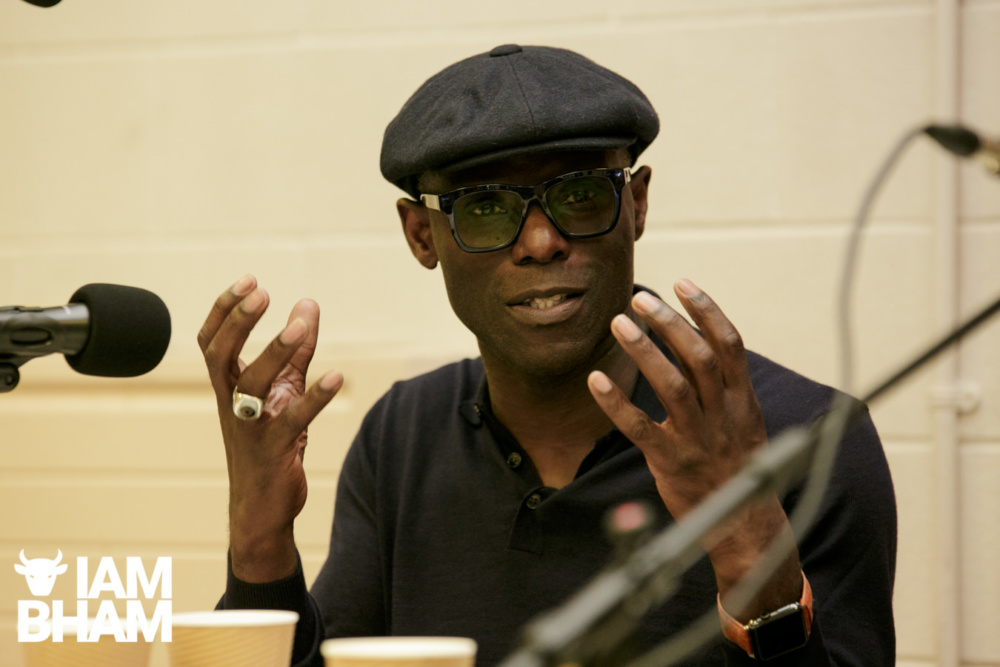 Lensi Photography
Lensi Photography “We knew what we were trying to say, we had to break down those barriers. The first costumes came from the “Dead Man Shop”, which is what we called the second-hand shops at the time, we had roles to play on stage.
“When it came to the KKK hoods costume on stage, I tried to get all the members to wear them, but others said they couldn’t play their instruments in them. A lot of our audience were punks, at the time if they liked you, they would spit on you; throw beer if they really liked you and throw glasses at you if you were great. Their response to liking the music was to attack you on stage. We had to let them know they had to shut up and listen to us.”
Stranglers Tour
Mykaell said: We got The Stranglers tour, that was integral to us and our relationship with punks. Aswad actually got it before us but they were not fond of the spitting and glassing, we could deal with it, so we ended up getting it.
How did Steel Pulse get signed to Island Records?
Basil explained: “We got signed to Island Records after supporting Burning Spear. We were dressed usual for a reggae band, the crowd went crazy when we just walked out, before we even played a note.”
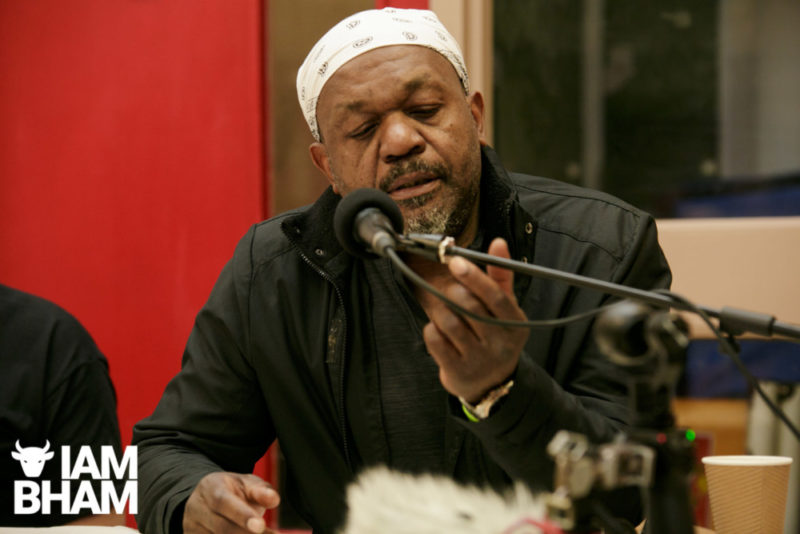 Lensi Photography
Lensi Photography Mykaell said: “London didn’t care about us, they did not know there was anything beyond Watford. Our challenge was about how we escaped the Midlands. We won a competition that lead to a London producer producing us.”
“They were infatuated with the idea that London didn’t know about us, they then employed PR to profile us, which was unusual at the time, so people knew about us.”
“Our relationship to a punk audience was publicised, so by the time we got to that gig we had a strong white following that exceeded our black following. We brought those communities together, some of our roadies were punk. It was the same message.”
“I am a believer that your ambitions must be beyond you or it’s not an ambition in my book. Our first one was to conquer London, then the world.”
Messages in the artwork
Basil was at art college at the time, he heavily influenced the artwork on the album cover.
Basil stated “The building was Babylon crumbling, and some of us trying to get out. The greenery was the jungle we had to battle through in life. The rock was Steel Pulse, we are Solid as a rock!”
Musical influences
Another white male fan from the audience commented: “We went to the Russell Club, which became the Hacienda in Manchester. I bought my Ku Klux Klan as a single. I was a student in Manchester studying racism and stereotypes, so it all made sense to me. The marriage of Punk and Reggae was massive”.
A black female fan from Paris said: “In those days , Bob Marley, Third World and Steel Pulse were the names you heard in Reggae in Paris, this is how big you were.”
Mykaell said: “We were influenced by a lot of music, we were not going to conform to traditional reggae arrangements. We attempted to describe a future through our music, [what happens] if we don’t change our trajectory.“
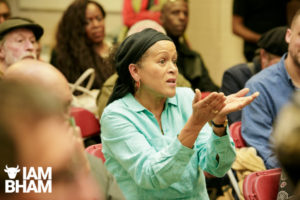 Denise James | I Am Birmingham
Denise James | I Am BirminghamLegacy of the album
Vanley said: “The mural is a long overdue tribute to the band. Handsworth is one of the only areas you could describe as a revolutionary area of Birmingham . The legacy lives on in people who are studying and writing about the music.”
Mykaell said: “It’s important because when I was growing up, we didn’t have role models. The album was a platform we created to talk about the community. This community is still being talked about internationally because of this album. Handsworth is probably recognised more outside of Birmingham because of this album, more than it is in Birmingham!”
Jez Collins added: “Steel Pulse is one of the Great British bands.”
“The mural will adorn the centre for the next 30 years and will be a daily reminder for the community of the history of Steel Pulse.”





